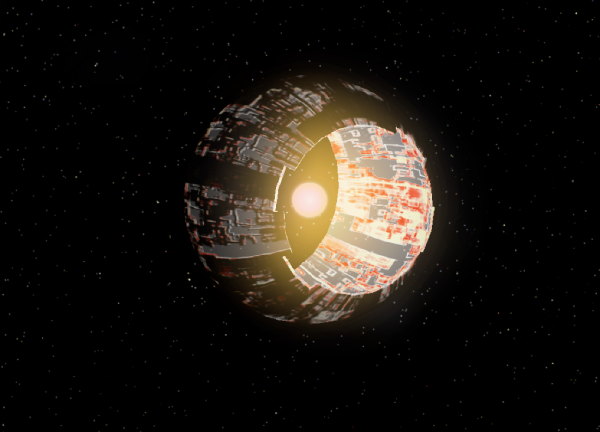BY LETTER
Artificial Worlds
Technology > Application > Infrastructure
Technology > Application > Megascale Engineering
Science > Planetology
Technology > Application > Megascale Engineering
Science > Planetology
Image from Steve Bowers |
Artificial worlds can be divided into habitats (when a habitat can be called a world is of course always a matter of taste, but the formation of a self-sustaining climate and ecology without the need for constant maintenance is usually the relevant point), mega-habitats (>100 km), Banks orbitals, ISOs, Dyson swarms, and other structures (like Kepleria). Categorization is usually simply by basic design, with no need for more elaboration.
Artificial World Classes
The artificial worlds found within the Terragen Sphere have almost all been constructed by humans and their mind-children; some, such as the Black Acropolis, are much older. Artificial worlds fall into two broad categories- those which rotate to produce artificial gravity, and those which do not- Rotating Space Habitats: Habitats constructed using conventional materials. Includes Paired Habitats, Stanford Tori, O'Neill Cylinders, Bernal Spheres, and Bishop Rings. More information Here.
- Banks Orbitals and Ringworlds: Rotating habitats made from exotic materials. (See Banks Orbitals).
- Microgravity Space Habitats: These do not rotate at all, and have no internal gravity. Often used by space adapted clades; can be very large, but they are limited by their density; if they are too dense they will undergo self-gravitational collapse. More information here.
- Ederworlds: More information here.
- Supermundane Worlds: Worlds dynamically suspended above planets and stars. More information here.
- Freespheres: Microgravity balloons containing atmosphere; these can be very large indeed. More information here.
- Dyson Swarms and Spheres: Many classes of this type of construct are described here.
- Artificial Planets: Spherical habitats with the environment on the outside, resembling natural planets to a greater or lesser extent. More information here.
 Image from Steve Bowers | |
| Myuvyin Partial Dyson Shell | |
Related Articles
Appears in Topics
Development Notes
Text by Anders Sandberg, John M. Dollan, and Steve Bowers
Initially published on 07 October 2001.
Initially published on 07 October 2001.






